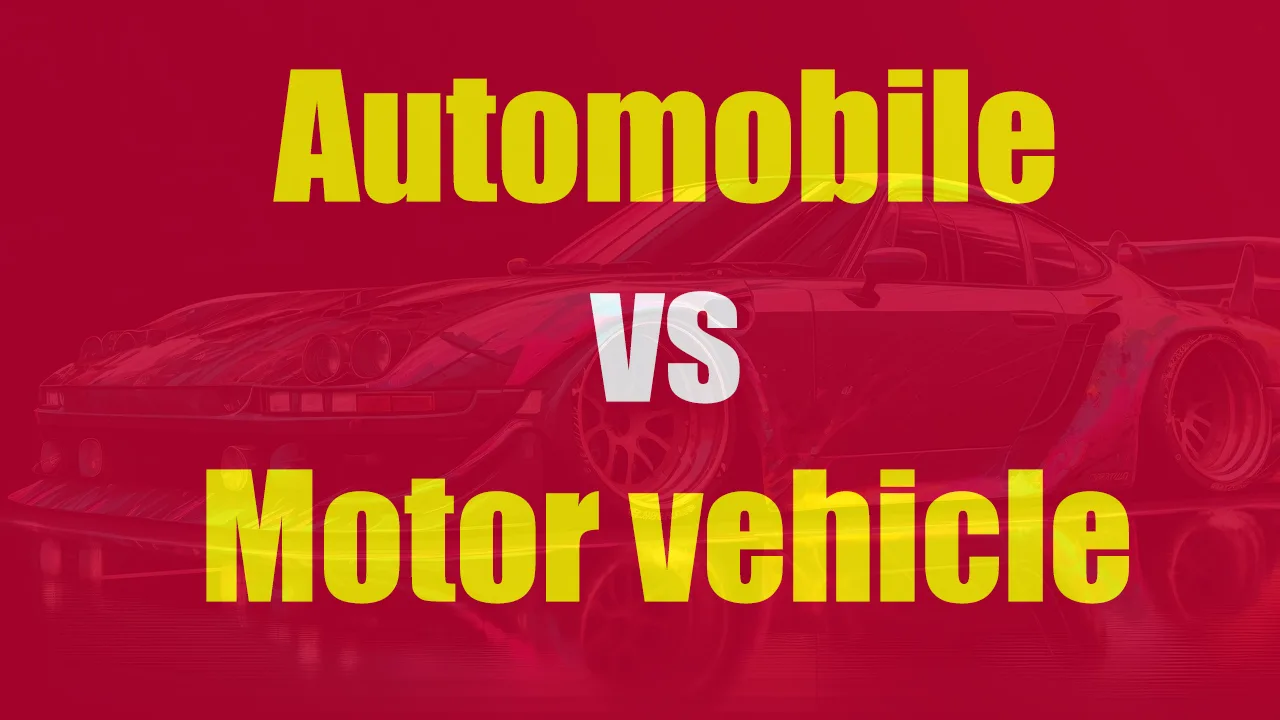The terms “automobile” and “motor vehicle” are often used interchangeably, leading to confusion among individuals unfamiliar with the nuances of transportation terminology. Though these terms are related, they signify different concepts within the broader context of vehicles designed for transportation. In this detailed exploration, we will dissect the definitions, characteristics, and distinctions between automobiles and motor vehicles, shedding light on the subtleties that set them apart.
Automobile vs Motor vehicle – What are the differences
The term “automobile” is derived from the Greek words “auto” (self) and “mobilis” (movable), encapsulating the essence of a self-propelled vehicle designed for the transportation of passengers. Typically characterized by four wheels, automobiles are powered by various propulsion systems, including internal combustion engines, electric motors, or hybrid technologies. Over time, car form and usefulness have given rise to vehicles, including sedans, SUVs, coupes, convertibles, and more.
Passenger Transportation:
The fundamental purpose of automobiles is to facilitate the comfortable and efficient transportation of passengers. It distinguishes them from other vehicles designed for cargo or specialized functions.
Automobiles often prioritize passenger comfort, safety features, and entertainment amenities to enhance the travel experience.
Individual Ownership:
Most car owners are individuals or families who utilize them for personal transportation. This feature distinguishes them from cars used for business or public transport. Ownership of an automobile is often associated with personal preferences, reflecting individual lifestyles, needs, and aesthetic choices.
Variety of Models:
The automotive industry caters to a diverse consumer base by offering automobile models. It ranges from compact city cars to luxurious sedans, rugged SUVs, and sporty coupes. The availability of different models allows consumers to choose vehicles that align with their preferences, whether it be fuel efficiency, performance, or style.
Design and Aesthetics:
Aesthetic considerations play a significant role in the automobile industry. Manufacturers invest in the visual appeal of their vehicles, emphasizing exterior styling, interior features, and a variety of color options.
Understanding the Motor Vehicle:
While an automobile falls under the broader category of motor vehicles, the term “motor vehicle” encompasses a range of self-propelled vehicles designed for transportation purposes. Beyond passenger cars, motor vehicles include motorcycles, trucks, buses, and any vehicle equipped with a motor for propulsion. The key distinction lies in the broader scope of applications and functions associated with motor vehicles.
Diverse Applications:
Motor vehicles are a diverse range used for purposes other than passenger transportation. This category encompasses motorcycles, trucks for freight transport, buses for public transit, and specialized vehicles for specific industrial purposes.
The versatility of motor vehicles allows them to fulfill diverse roles in both personal and commercial contexts.
- Audi GT50 Concept: A Loud Reminder of Why Car Enthusiasts Fell in Love With Audi
- Nearly 30% of UK Drivers Believe Car Tax Should Be Based on Mileage — Survey
- Why Planes and Boats Escaped the Luxury Tax But Cars Didn’t
- Australia’s Headlight Confusion: Authorities Warn Drivers After Viral $250 Headlight Rule Goes Wild Online
- 2025 Hyundai Venue Facelift Launched in India – Full Details, Variants, and Price
Commercial and Industrial Use:
One noteworthy aspect of motor vehicles is their use in commercial and industrial environments. Commercial vehicles may have distinct design features and operational requirements compared to typical automobiles, considering factors such as payload capacity, durability, and fuel efficiency.
Varied Propulsion Systems:
Motor vehicles demonstrate adaptability in terms of propulsion systems. This diversity in propulsion systems reflects ongoing efforts within the automotive industry to address environmental concerns and explore sustainable energy alternatives.
Regulatory Considerations:
Motor vehicles are subject to a comprehensive regulatory framework, often surpassing the regulations applied to automobiles. Commercial vehicles, in particular, may face additional scrutiny regarding weight limits, licensing requirements, safety standards, and emission controls.
The broader scope of applications for motor vehicles necessitates a more intricate set of regulations to ensure public safety, environmental sustainability, and efficient transportation systems.
Key Distinctions:
The primary distinction between automobiles and motor vehicles lies in the scope of use. Automobiles are designed for personal transportation, emphasizing comfort, aesthetics, and individual ownership.
Motor vehicles, on the other hand, encompass a broader range of applications extending beyond personal transportation. It includes vehicles utilized for commercial, industrial, and public purposes.
Ownership and Purpose:
Automobiles are typically owned by individuals or families for personal use, aligning with their preferences and lifestyle choices. Ownership is associated with convenience, mobility, and personal expression.
Motor vehicles may be owned by businesses or government entities, serving specific functions such as transporting goods, facilitating public transit, or supporting industrial operations.
READ MORE :
- All About Aston Martin Cars
- Audi e tron Review
- Bently Continental GT price in India
- BMW X1 Price in India
- Brezza 2022 Launch date in India
- Why Bugatti Is So Expensive?
- Best car dealers in Dubai
- Concorde Motors Kochi
- Honda Showroom Kochi
- Indus Motors Thevara
- KIA DEALERS IN PUNE
- Lamborgini Showroom in India
- Nippon Toyota Kalamassery
- Rolls Royce Showroom in India
- Sai Service Pathadipalam
- Top 10 Car Showrooms Kottayam,
- Top 5 Car Showrooms Trivandrum
- BREZZA 2022 vs TATA NEXON
- Citroen C3 price in India
- 2021 Chevrolet corvette vs Mustang Shelby GT50
- Is Mercedes-Benz better than BMW?
- EcoSport Price in Kerala
- Upcoming Ford cars in India –
- Alcazar
- Cars price in India
- Hyundai Creta
- i20 Price in Kerala on-road
- venue price in India
- KIA Carens price in India on road
- Carnival 2021 India
- KIA Cars on road price in India
- seltos price in Kerala
- Kia sonet price in Kerala
- Landrover Range rover Evoque review
- Mahindra Bolero Neo
